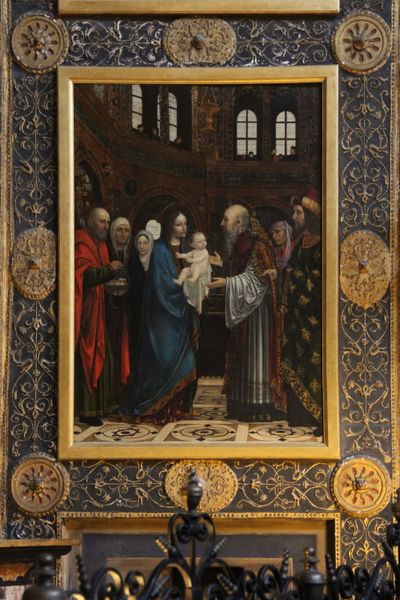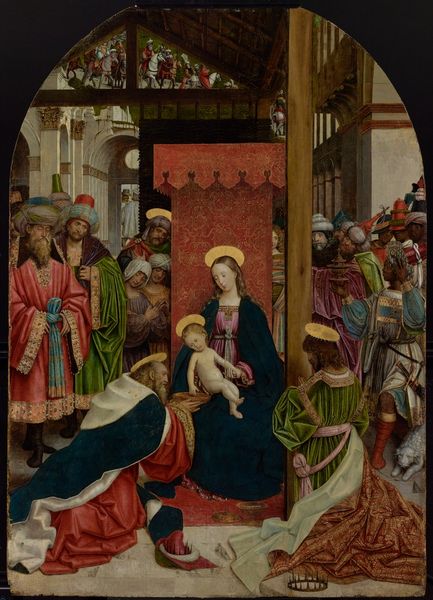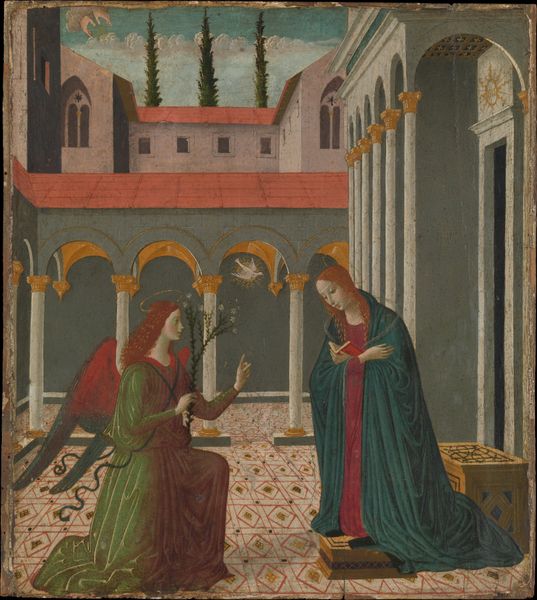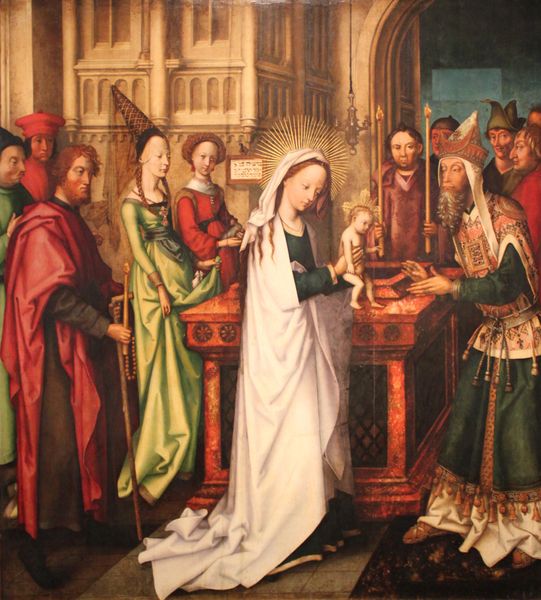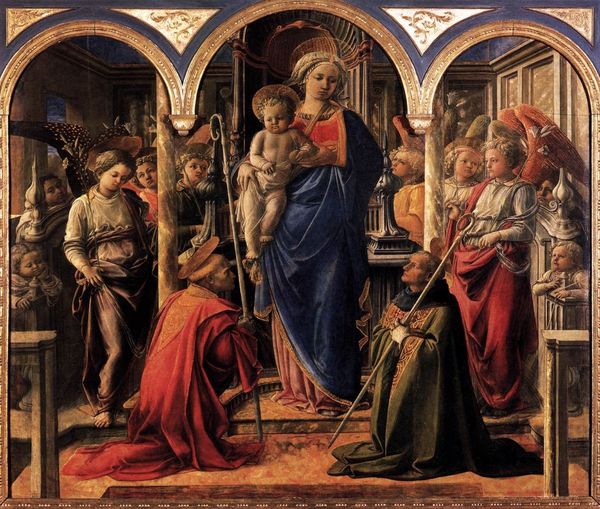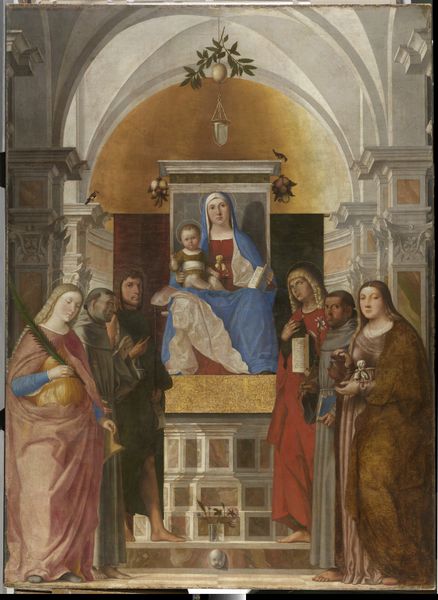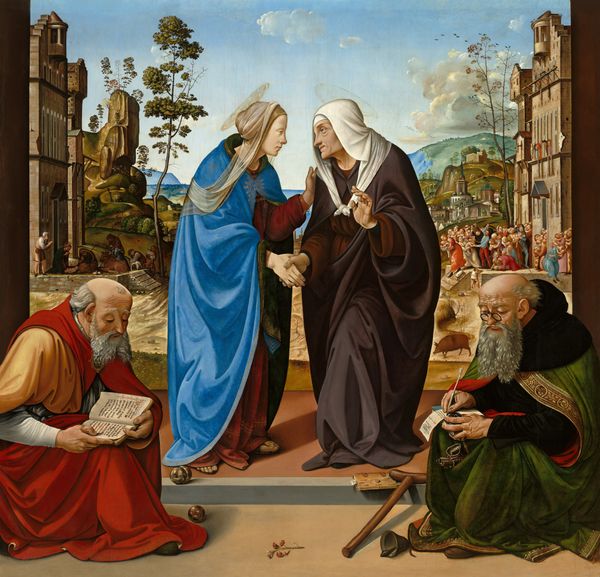
painting, oil-paint, fresco
#
narrative-art
#
painting
#
oil-paint
#
perspective
#
figuration
#
fresco
#
oil painting
#
history-painting
#
italian-renaissance
#
portrait art
Copyright: Public domain
Curator: Looking at this oil painting attributed to Ambrogio Bergognone called "Visitazione," the symmetrical composition struck me immediately. Editor: Yes, that's what grabs you, doesn't it? It's all angles and contained emotion, like holding your breath underwater. It's powerful. I bet the creation was quite elaborate. Did they have assistants prepare pigments in a highly ritualized way? Curator: Without extensive documentation, we infer that in Bergognone’s Italian Renaissance workshop the apprentices most likely ground pigments, prepared panels, and assisted in underpainting. It involved a layered building up, so as to achieve luminosity and depth. I imagine they utilized ultramarine pigment sourced from lapis lazuli, a precious material adding significance to the garments, so too is the process for fresco variants, I would argue, despite using a different material set. Editor: I am thinking now how they ground and bound the color, the smells, the young hands toughening... You see it right there in that lapis, though. It's the quiet blue in Mary's cloak. Makes you wonder about Bergognone himself, what he traded or gave up to obtain the mineral and whether this added something else to his intention in this devotional act. Curator: Context and meaning go hand in hand in Italian Renaissance art, in my opinion. The use of oil paints versus fresco techniques, influenced the final product, how colors manifested, and ultimately affected perception. This particular selection makes use of light within these figures. I find it particularly thought-provoking when analyzed alongside Bergognone's other known fresco work in the same genre. Editor: Definitely makes me ponder the touch, doesn't it? How different are each method in the end. Almost imperceptible perhaps. Makes it almost a question, a material meditation. That's all, it's quiet intensity in this work, like so much is waiting beneath the skin. Curator: Indeed. Looking at it now through the lens of artistic process helps illuminate why we still gather to appreciate it, century after century. Editor: Exactly.
Comments
No comments
Be the first to comment and join the conversation on the ultimate creative platform.



